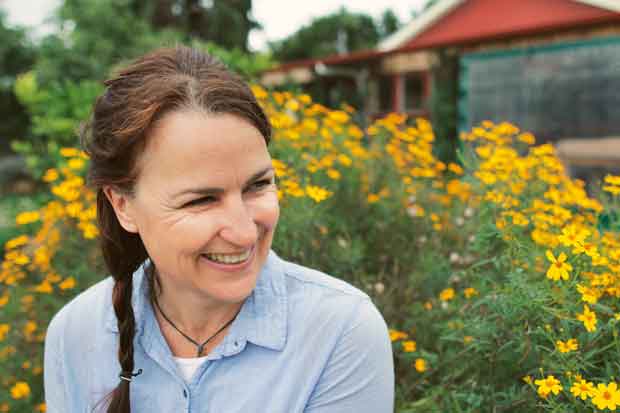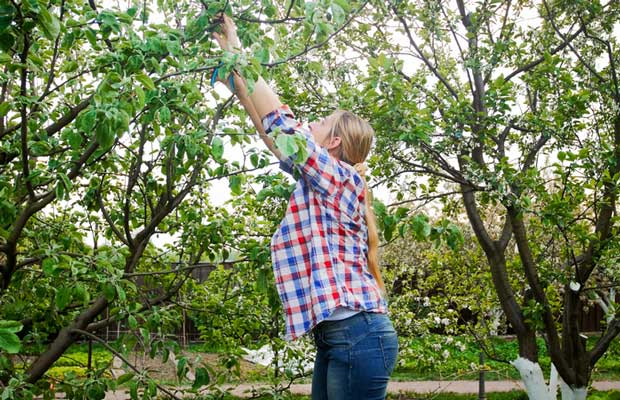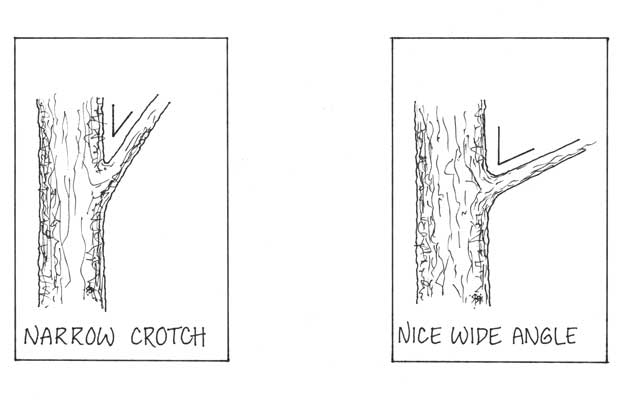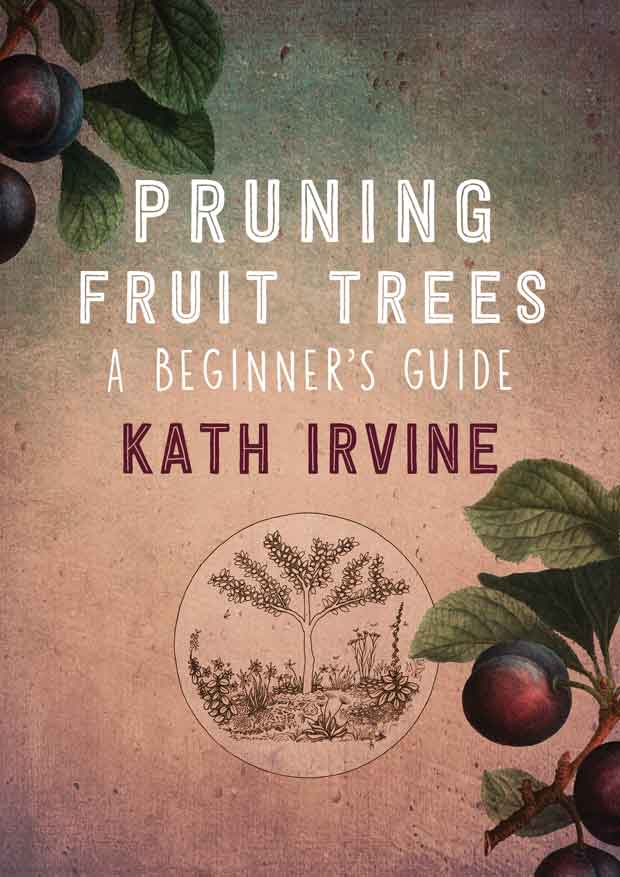Kath Irvine’s pruning fundamentals: When to prune and the three golden rules of pruning
There are three kinds of pruners in Kath Irvine’s experience. Those who want to chop off 90 per cent of the tree, those who don’t chop off enough and — the biggest group — those who are too worried about ruining a tree to chop at all. Kath demystifies this aspect of gardening in this special extract from her book Pruning Fruit Trees: A Beginner’s Guide.
Words Kath Irvine
Pruning Goals
Let’s begin with a set of goals because knowing what you want to achieve is half the battle won. Enjoy a beautifully shaped tree and produce fruit consistently by:
*creating a strong balanced tree, one that can handle heavy winds and abundant crops without breaking
*creating a small compact tree that’s easy to manage (rootstock determines height so bear this in mind when choosing trees)
* letting plenty of light through the canopy (wood bathed in light is productive wood, and our goal is to inspire as much productive wood as possible)
*enabling air flow (a key player in maintaining good health)
*providing good access for insects, the bird pollinators and the human fruit pickers
*removing old, spent, diseased wood to stimulate new growth and maintain good health.
Treeminology
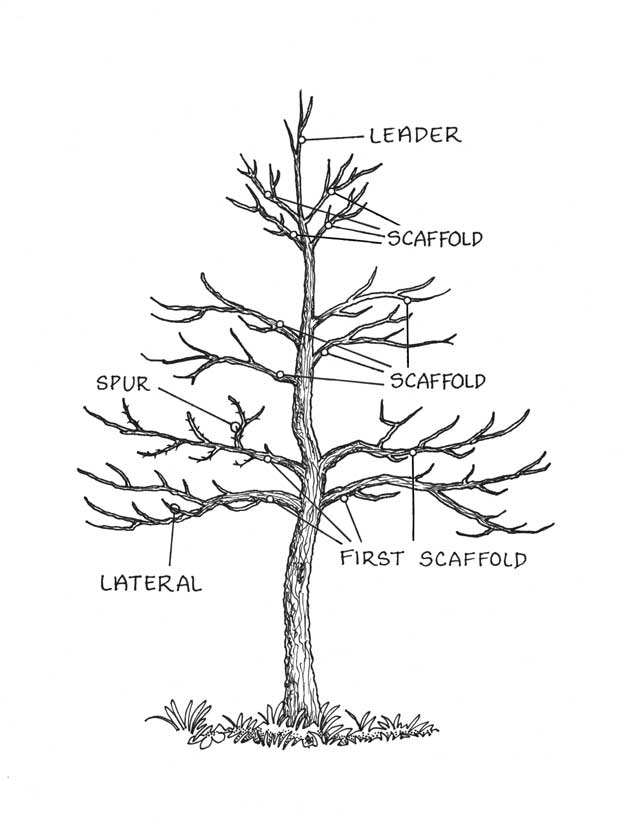
Leader: The main trunk that runs from the ground to the top of the tree. In a young tree it’s but a stem.
Scaffold: A tier of 4 or 5 branches springing from a similar point on the leader.
Lateral: The shoot that rises from the branch and bears the fruit spurs.
Spur: A collection of buds that bloom and become fruit.
Important Pruning tips
THE GOLDEN THREE
1. Always prune on a dry day.
2. Before cutting begins, study your tree. Find the leader and scaffolds. Notice where light needs to penetrate. Where has vigour faded? If you are new to pruning, it’s a good idea to mark limbs for removal with a squirt of spray paint, a rag or a clothes peg. Stand back and double check your vision before getting into it.
3. Don’t prune off more than a quarter of your tree. Stack the prunings up beside your tree so you can clearly see how much you’ve taken off.
ORDER YOUR PRUNE THUS
1. Saw in hand, start with the big wood.
2. Thin and/or head back scaffold branches.
3. Head back leaders.
4. Thin and head back laterals and spurs, leaving the small, secateurs-sized (pencil width) wood for last.
BEWARE THE NARROW CROTCH!
It’s important that branches come from the tree at a nice wide angle (30−45° from the vertical). Any less than that is called a narrow crotch – a problematic thing that splits away from the trunk under pressure of fruit load or big winds. A narrow crotch is a weak join that no amount of tree trickery can overcome. Remove it when it’s young. Another branch will grow.
KEEP YOUR COOL
Now and then stand back and walk around the tree to make sure you’re on the right track. A bit of distance brings clarity (and cools down a pruning fever) – a good strategy for confused moments.
THE IMPORTANCE OF PRUNING HYGIENE
A dentist sterilises tools between patients. Handwashing is sensible before eating. Likewise in the orchard: hygiene prevents a multitude of problems. Keep tools clean by wiping them with methylated spirits or vinegar after pruning each tree. Cut out diseased wood until only the healthy remains. (Healthy wood is a whitish-cream colour all the way to the centre.) Remove and, ideally, burn diseased prunings to prevent problems spreading.
WHEN TO PRUNE AND TRAIN
Winter
Choose a dry day in Winter to prune pipfruit and vines – a little wind makes it perfect. Notch to encourage branches where there are none (in late Winter).
Spring
Tie down new growths to create branches, to open trees and encourage fruitful wood. Head back the tops of vigorous trees.Thin the fruit.
Summer
Prune stone fruit trees after harvest on a dry day to avoid disease and champion a compact tree. Pinch off unwanted growths now to avoid pruning later, especially on young trees and espalier. Thin the fruit.
Autumn
Remove ties. Ponder your Winter prune.
Kath Irvine’s book Pruning Fruit Trees: A Beginner’s Guide is available through the thisNZlife online shop for $27.00
In Kath’s own words: I know how pruning worries you and ties you in knots, so I’ve created a concise guide. Small was my brief here, because home gardeners don’t need a tome! You guys need a simple understanding and a clear set of instructions. I managed to get it down to A5, and a mere 76 pages. She’s small enough to read in one sitting and take with you when you prune. Meet your portable pruning advisor.
